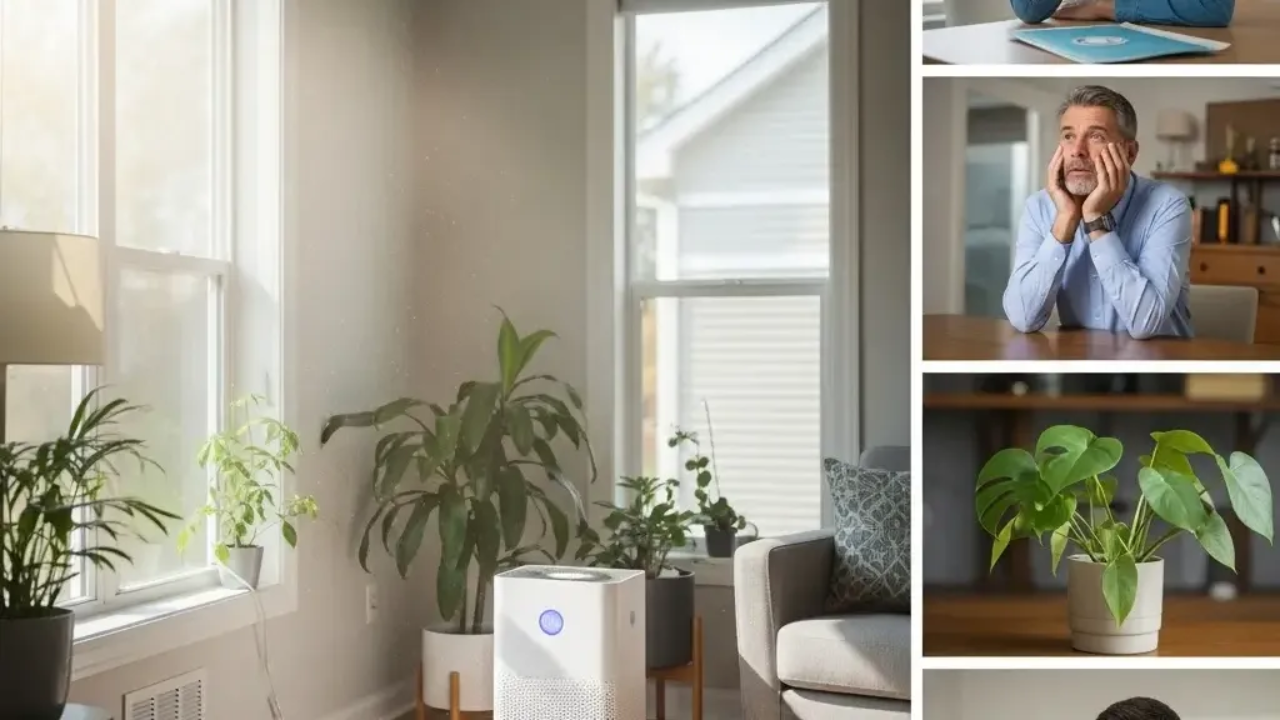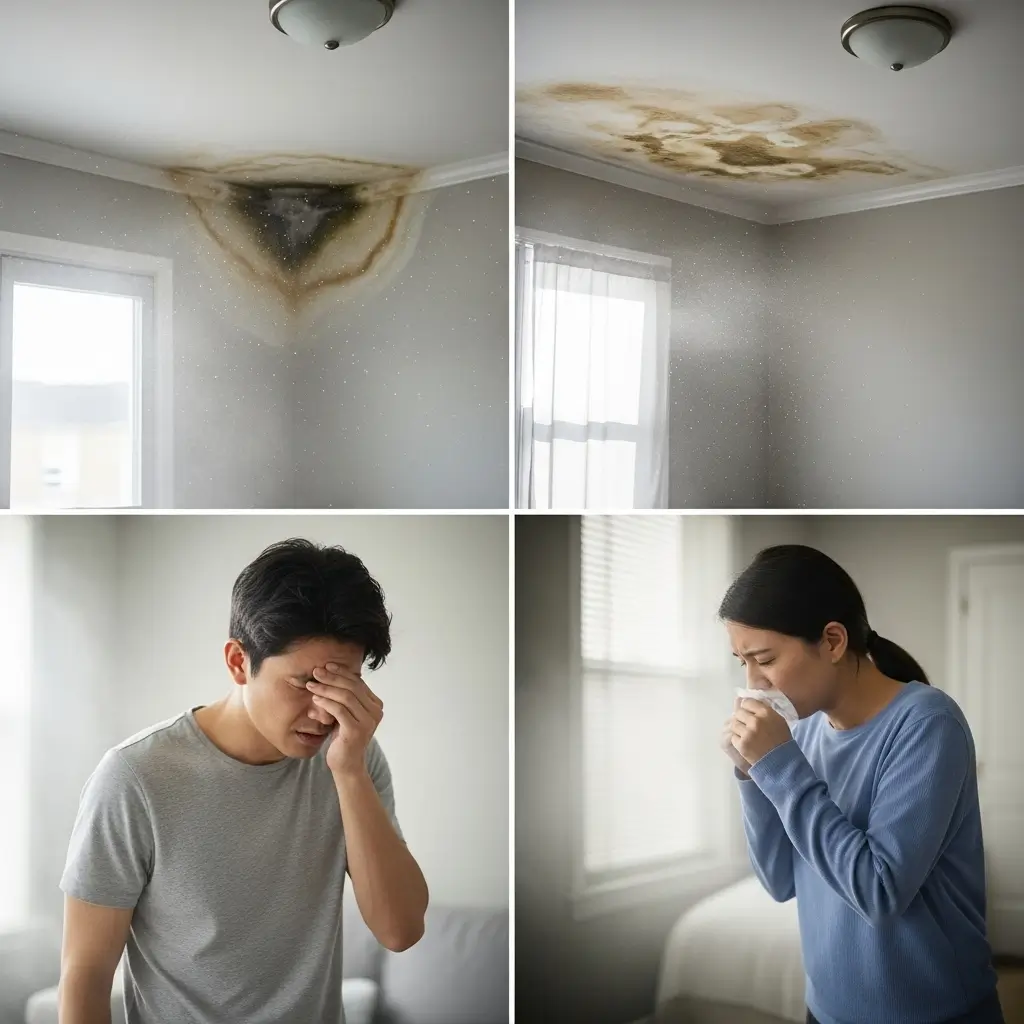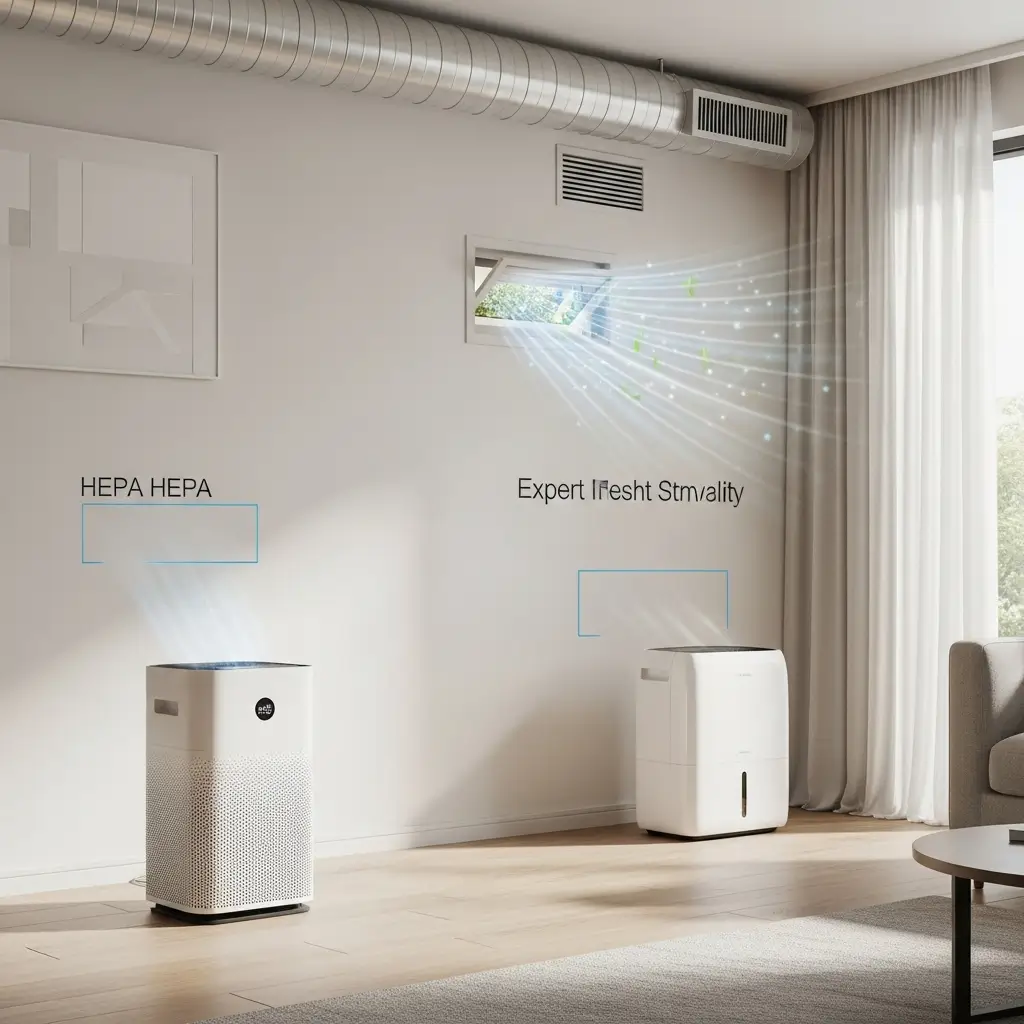
Hidden Causes of Poor Indoor Air Quality: Expert Warning Signs You Can't Ignore
Nov 14, 2025Poor indoor air quality often hides inside our homes and creates health issues we blame on other things. My work with many families revealed something surprising — their headaches, allergies, and breathing problems came from the air inside their homes, not outdoor pollution.
The reasons behind poor indoor air quality are everywhere. Hidden mold grows behind walls while furniture slowly releases harmful chemicals.
Most people don't notice anything wrong until their health symptoms become serious. This guide will help you spot important warning signs, understand hidden dangers that affect air quality, and learn expert tips to improve the air you breathe.
Early Warning Signs of Poor Indoor Air Quality

Your body knows when something's wrong with the air you breathe. Learning to recognize early signs helps prevent serious health issues. Indoor air can be 2–5 times more polluted than outdoor air.
Unexplained Respiratory Symptoms
- Headaches, fatigue, or difficulty concentrating that improve when you leave the building
- Irritation in your eyes, nose, throat, or lungs
- Dry throat, sinus congestion, dizziness, or nausea without a clear cause
- Burning eyes, coughing, or wheezing with no obvious trigger
If these symptoms disappear when you leave home and return when you come back, the indoor environment is likely the cause.
Persistent Odors or Stuffy Air
Bathrooms or basements with musty smells often indicate mold. An ammonia-like odor after rain — even without pets — may signal toxic black mold.
Rooms that feel thick, stagnant, or humid (above 50%) often point to poor ventilation and trapped pollutants.
Visible Mold or Mildew Patches
- Water stains on walls or ceilings
- Mold in damp or water-damaged areas
- Hidden mold behind wallpaper or under carpets
Mold spreads quickly through HVAC systems and requires immediate attention.
What Causes Poor Indoor Air Quality?
Indoor air often contains biological and chemical pollutants. Household products, building materials, and even pets release contaminants that accumulate indoors.
Volatile Organic Compounds (VOCs)
VOCs evaporate at room temperature and are much higher indoors. Common sources include:
- Paints, varnishes, and preservatives
- Cleaning products and disinfectants
- Furniture, especially pressed wood
- Aerosol sprays and air fresheners
VOCs can irritate the eyes and throat, cause headaches, and even harm organs or increase cancer risk.
Pet Dander & Biological Pollutants
Pet dander, bacteria, viruses, dust mites, and pollen all circulate through the air. Damp areas encourage mold and bacteria growth while carpets and furniture trap pollutants.
Poorly Maintained HVAC Systems
Dirty HVAC systems can spread mold, dust, and bacteria throughout your home. Poor ventilation ranks among the top causes of bad indoor air.
How Your Home’s Design Can Make It Worse

Tightly Sealed Homes & Poor Ventilation
Modern airtight homes trap pollutants indoors. Without proper mechanical ventilation, contaminants accumulate quickly.
Humidity Traps in Bathrooms & Kitchens
Moisture from daily activities creates ideal mold environments when ventilation is weak or exhaust fans don’t work properly.
Carpets & Heavy Drapes as Pollutant Reservoirs
Carpeting and drapes trap dust, pet dander, and allergens deep within their fibers, which re-enter the air when disturbed.
What Experts Recommend to Improve Air Quality

Source Control
Reducing pollutants at the source is the fastest way to improve air quality — eliminate indoor burning, avoid fragrances, and ensure good ventilation during chemical use.
Air Purification
Use HEPA filters to remove fine particles and activated carbon for odors. Avoid ozone generators or ionic purifiers.
Ventilation Strategies
Modern homes need mechanical ventilation systems like exhaust-only, supply-only, balanced ventilation, or energy recovery systems.
Humidity Control & Mold Prevention
Maintain indoor humidity between 30–50%. Fix leaks quickly, use exhaust fans, and place dehumidifiers in damp areas.
Conclusion
Indoor air pollution is often unnoticed until symptoms worsen. Mold, VOCs, pet dander, and poor ventilation all contribute to unhealthy air. Taking action with source control, purification, ventilation, and moisture management leads to a cleaner, healthier home.
Don't miss a beat!
New moves, motivation, and classes delivered to your inbox.
We hate SPAM. We will never sell your information, for any reason.

